Product
Liam Black Stack Trap
-
Tauira / Student
Liam Black -
Kaitautoko / Contributors
Lulu McIver, Ken Wyber, Matias Lotitto, Matt Sutton -
Kaiako / Lecturers
Machiko Niimi, Angus Lewry, Tim Armstrong, Andrew Wallace
-
Client
Harvey Aughton -
School
Otago Polytechnic School of Design
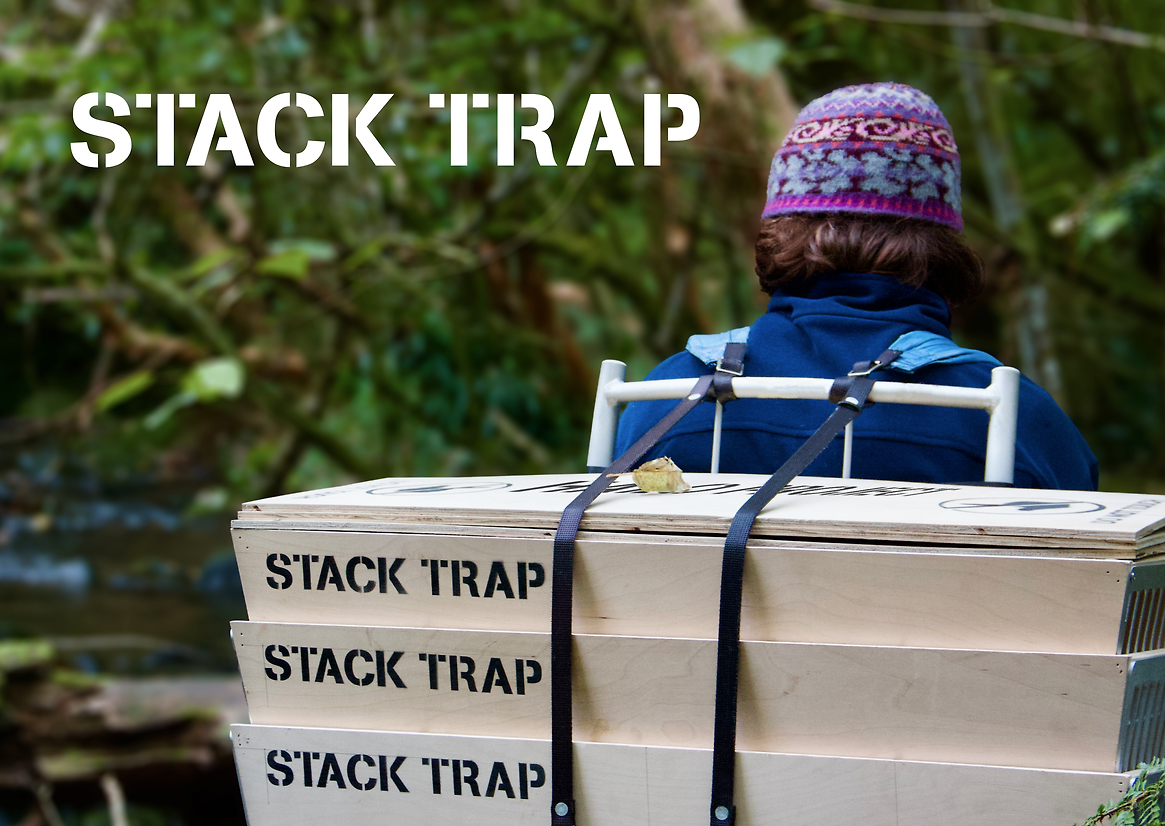
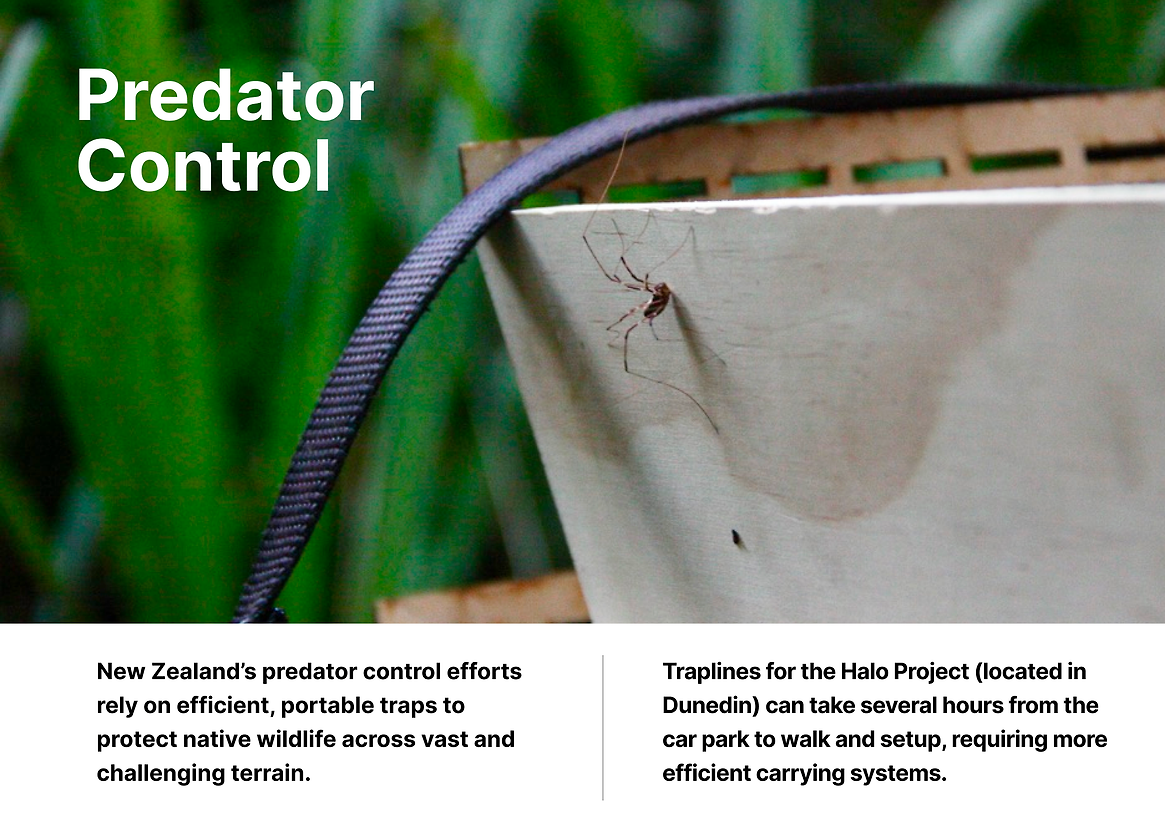
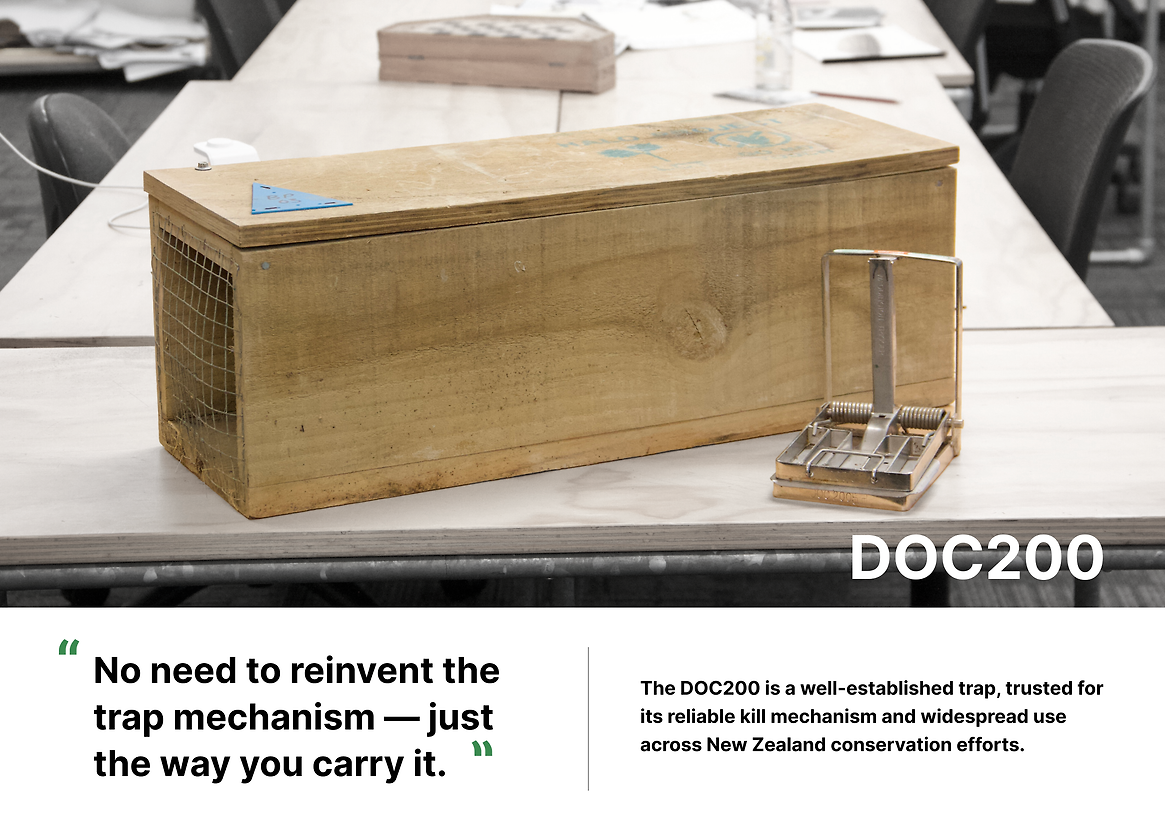
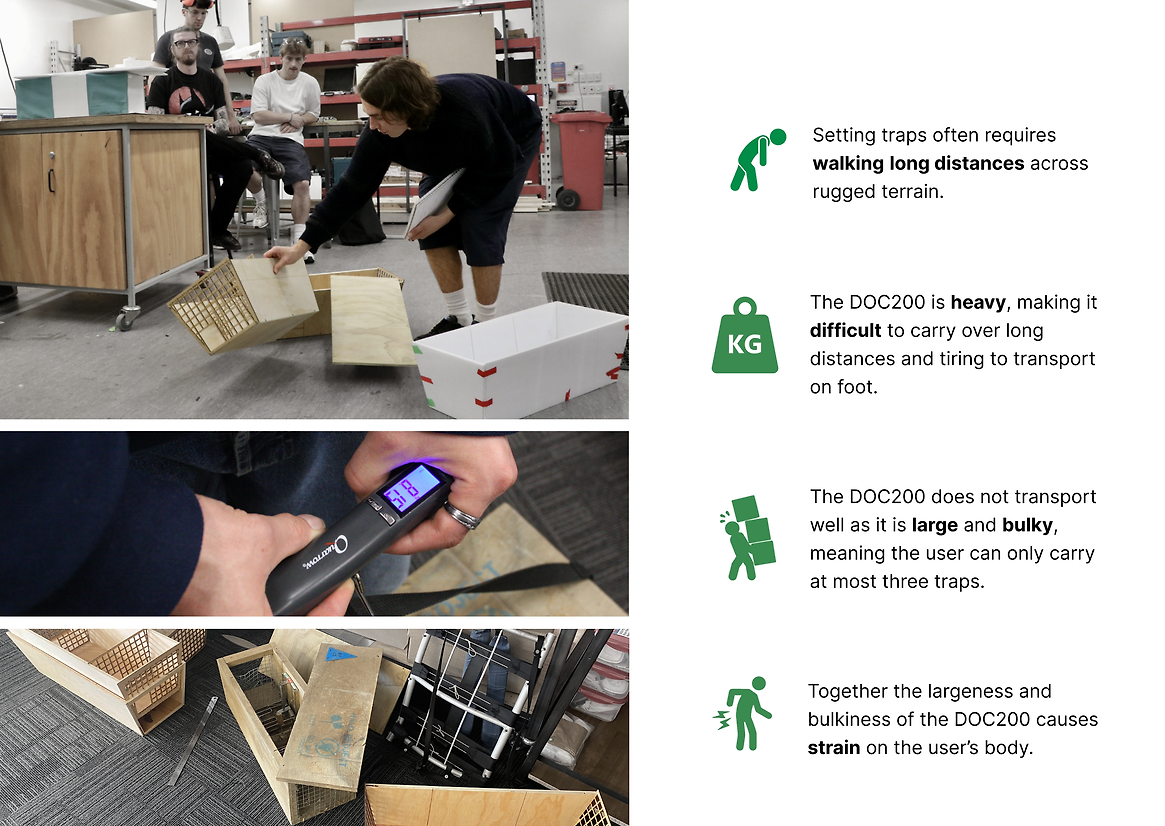
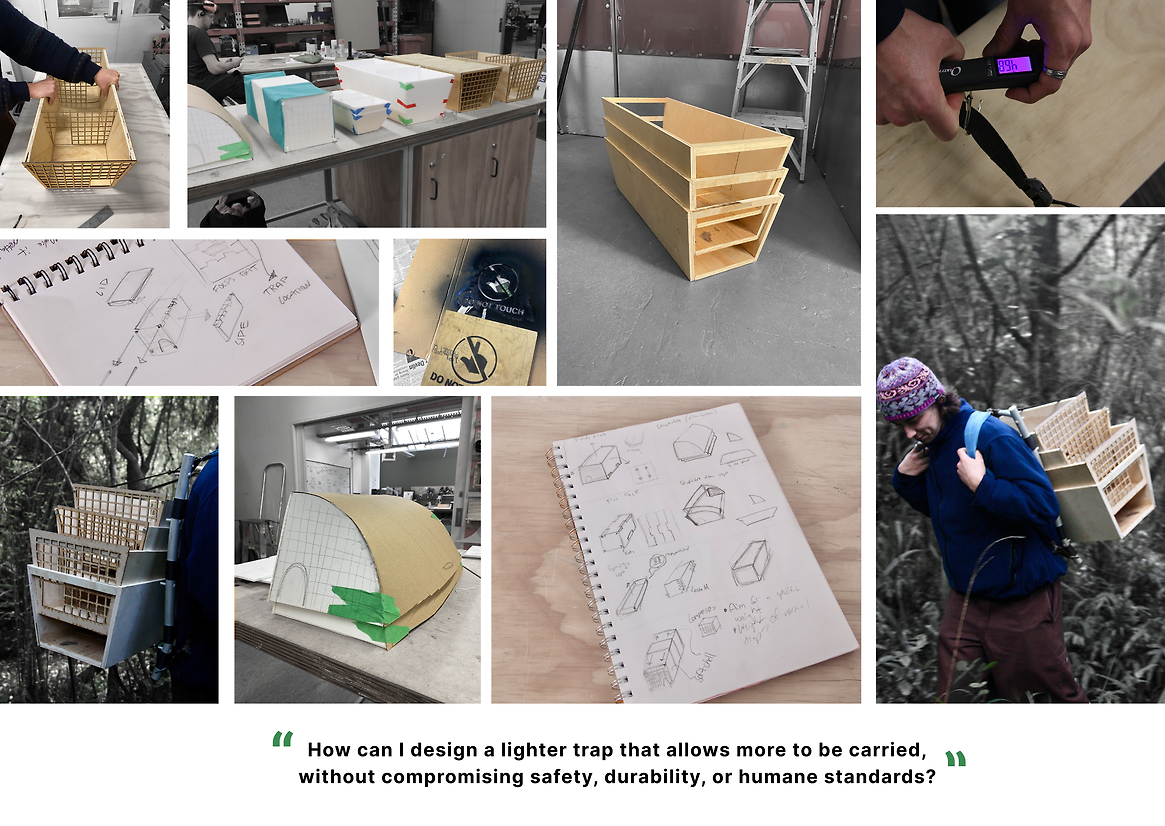
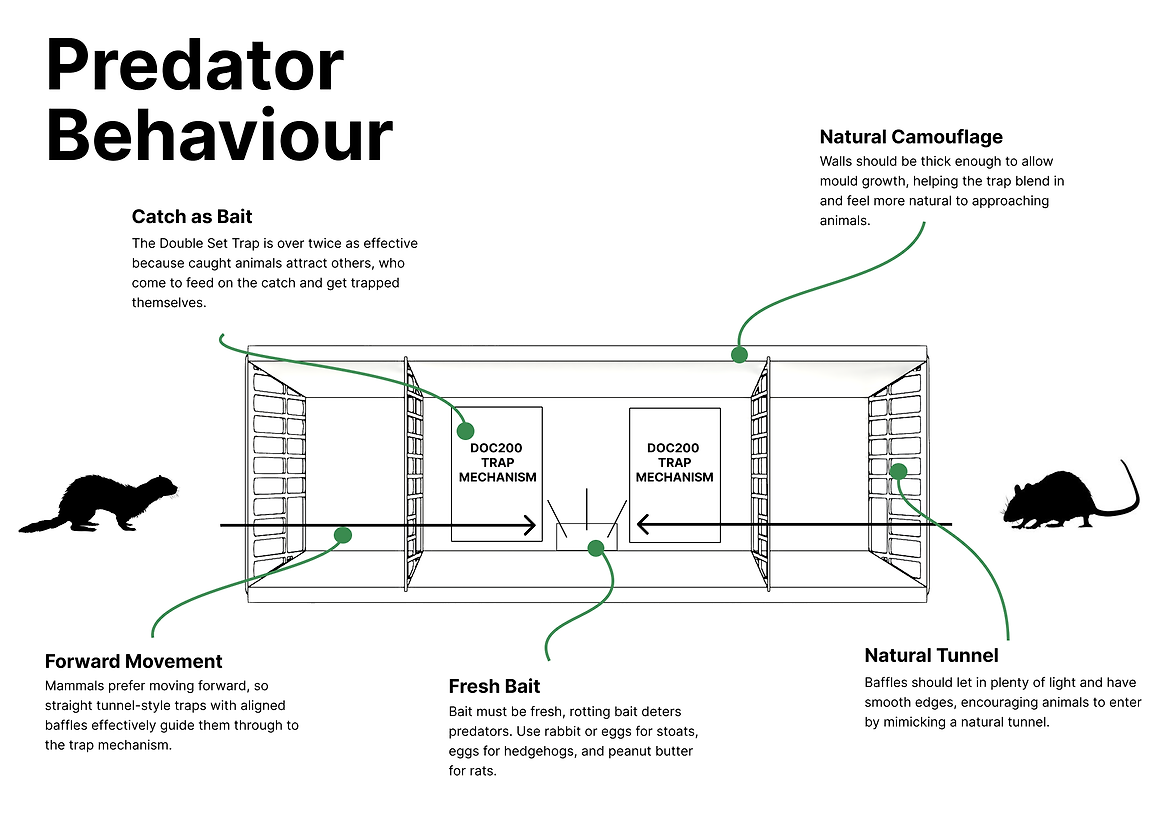
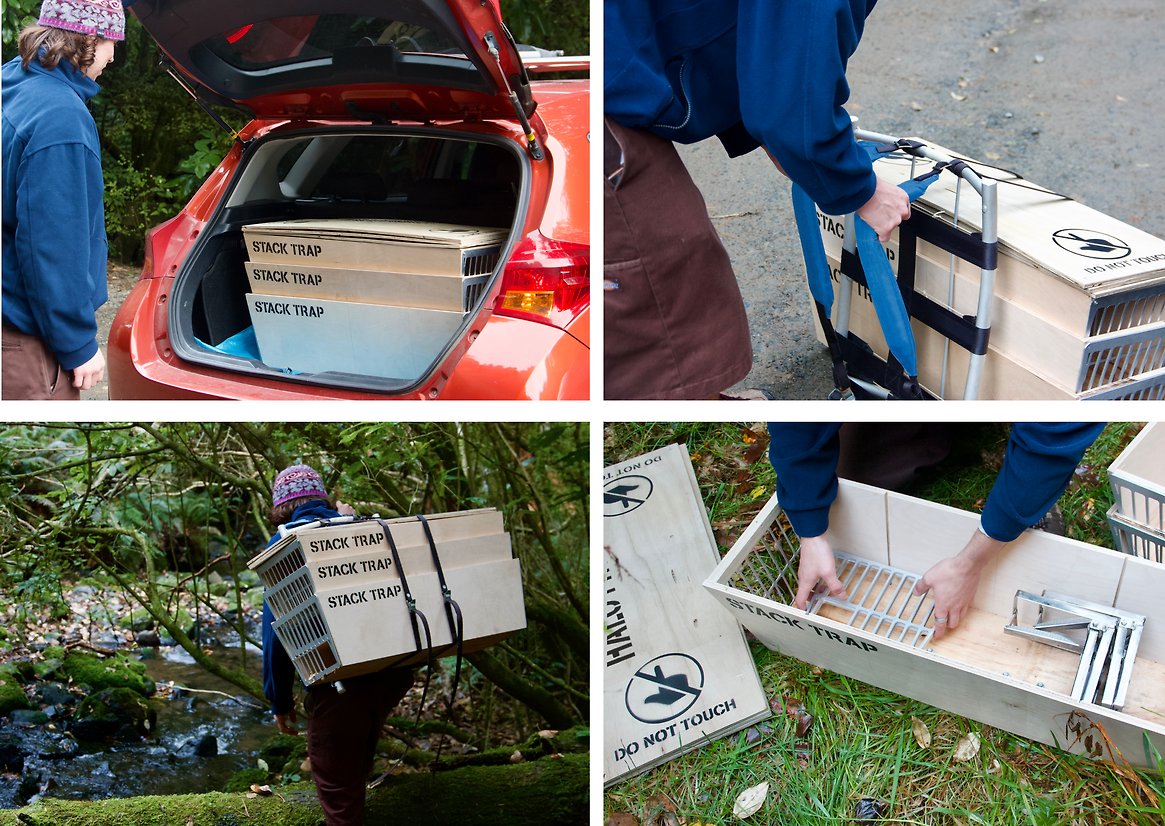
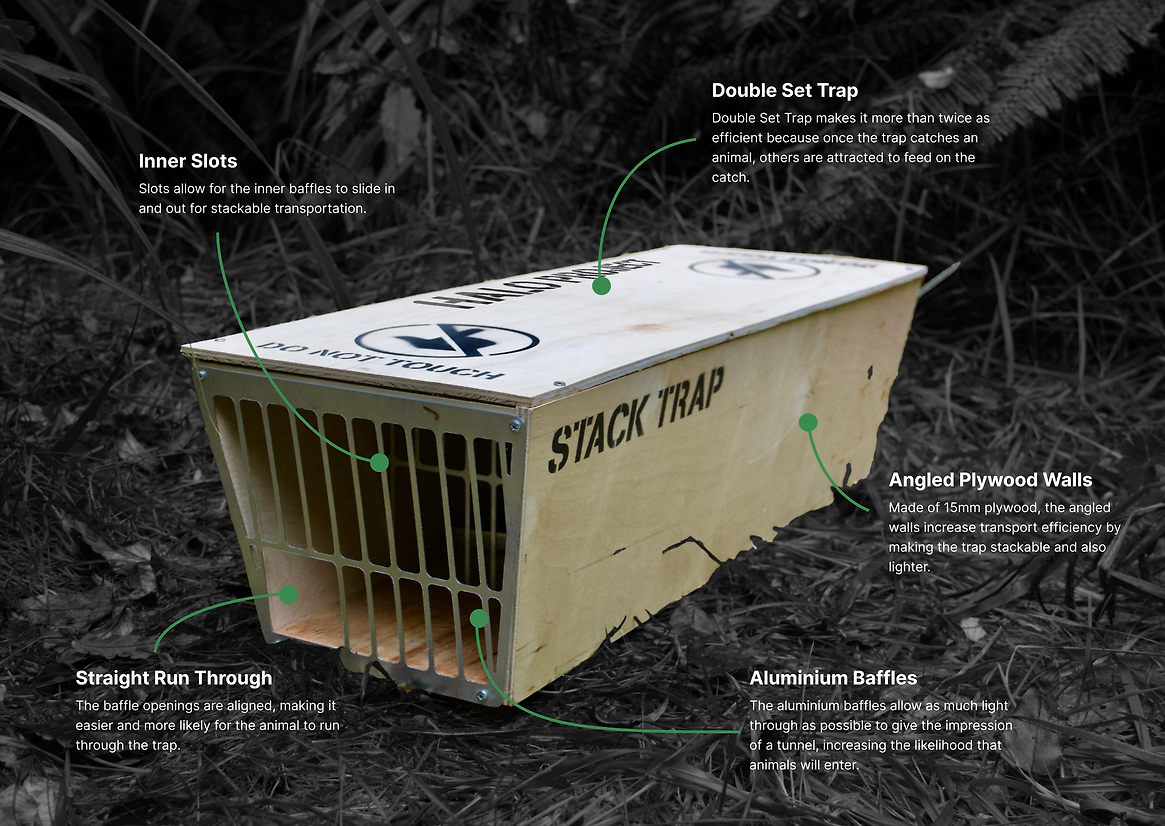
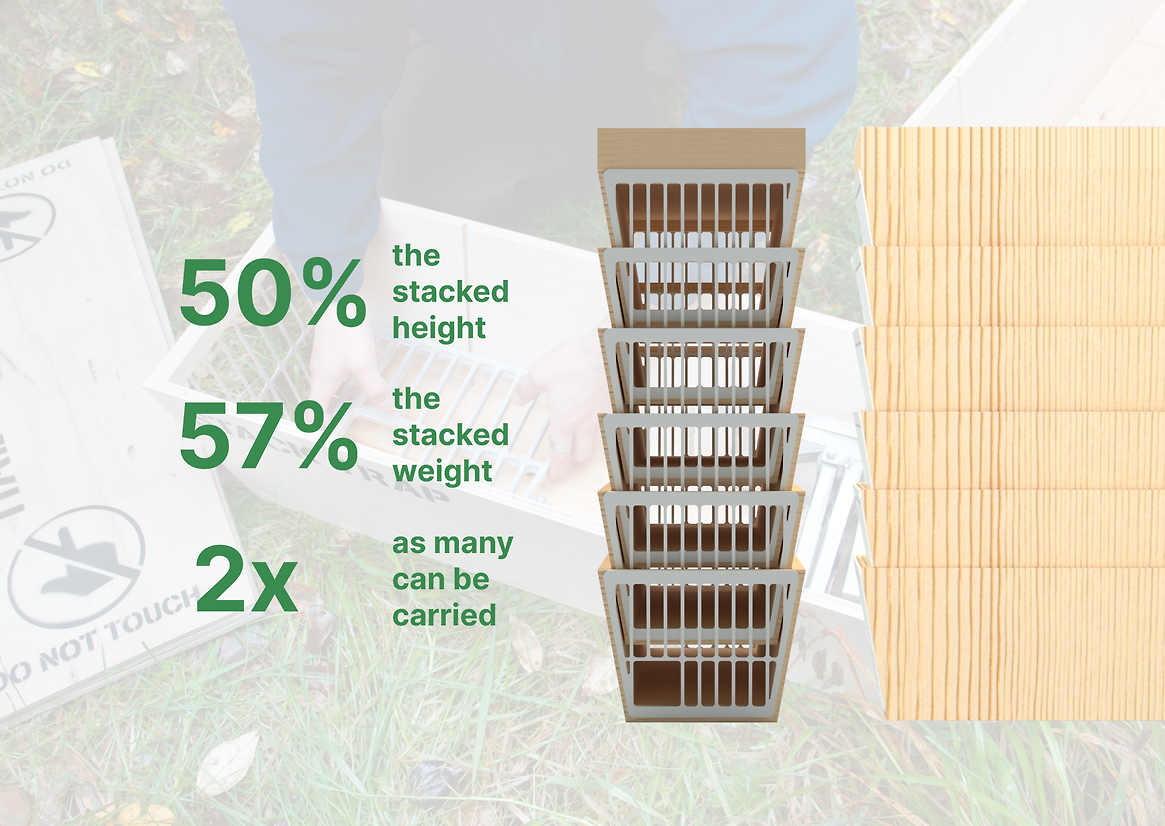
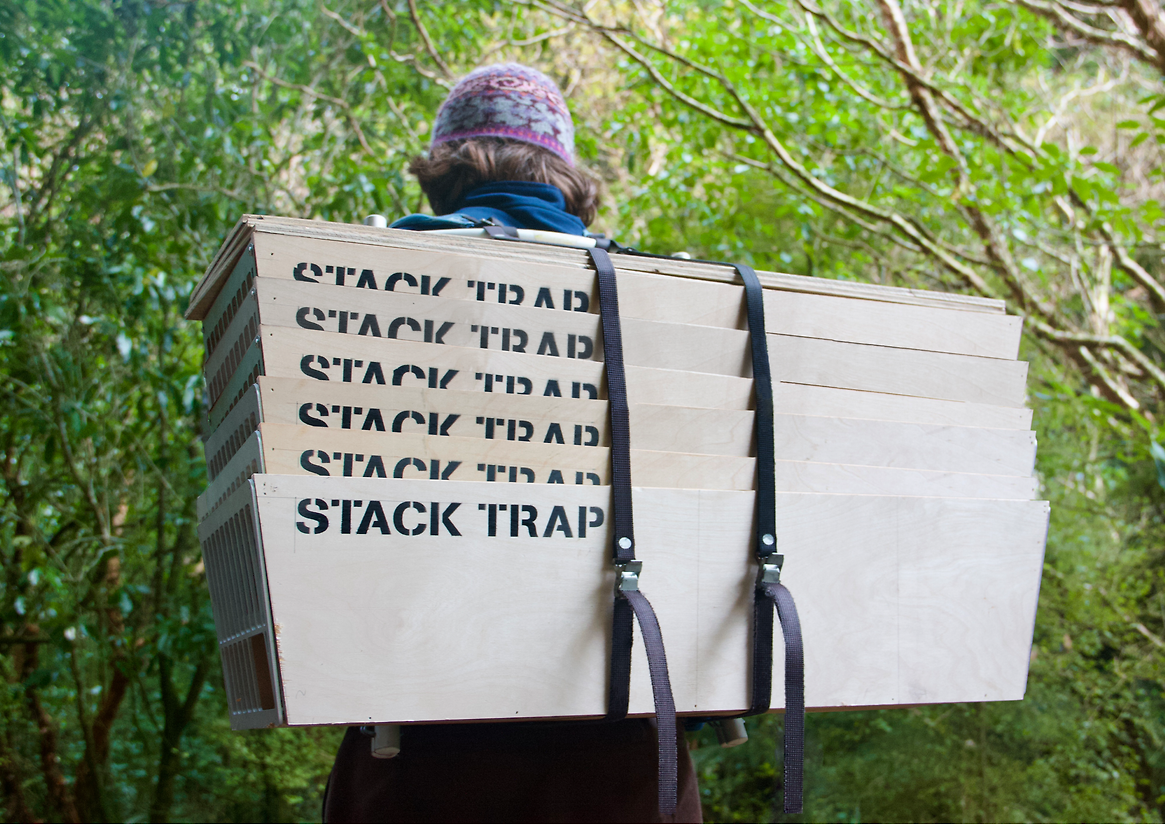
Description:
In New Zealand, trapping pest species like rats, stoats and possums is an essential part of our national conservation effort to protect native fauna and flora. With government efforts like Predator Free 2050, there is an increased opportunity for pest trapping. However, with so much land to cover across New Zealand, often only accessible on foot, efficient trap deployment is essential to large-scale eradication of pests. Trap lines around Dunedin, run by the Halo Project, can stretch several kilometres and take hours to walk depending on the terrain.
Current DOC200 traps are a tried and tested mechanism much favoured by conservationists. But the traps are heavy and bulky, making them difficult to carry over long distances, and inefficient, as only a few can be transported at once.
The Stack Trap focuses on stacking the trap housing to reduce weight and bulk and improve transportation. Thinner 15mm plywood and angled walls allow traps to nest, cutting transport space in half. The Stack Trap is nearly half the weight of a standard DOC200 trap, and is easier to carry.
Maintaining the DOC200 mechanism, this design improves portability and efficiency, supporting the Halo Project and New Zealand’s Predator Free 2050 goal, helping protect Aotearoa’s native species.